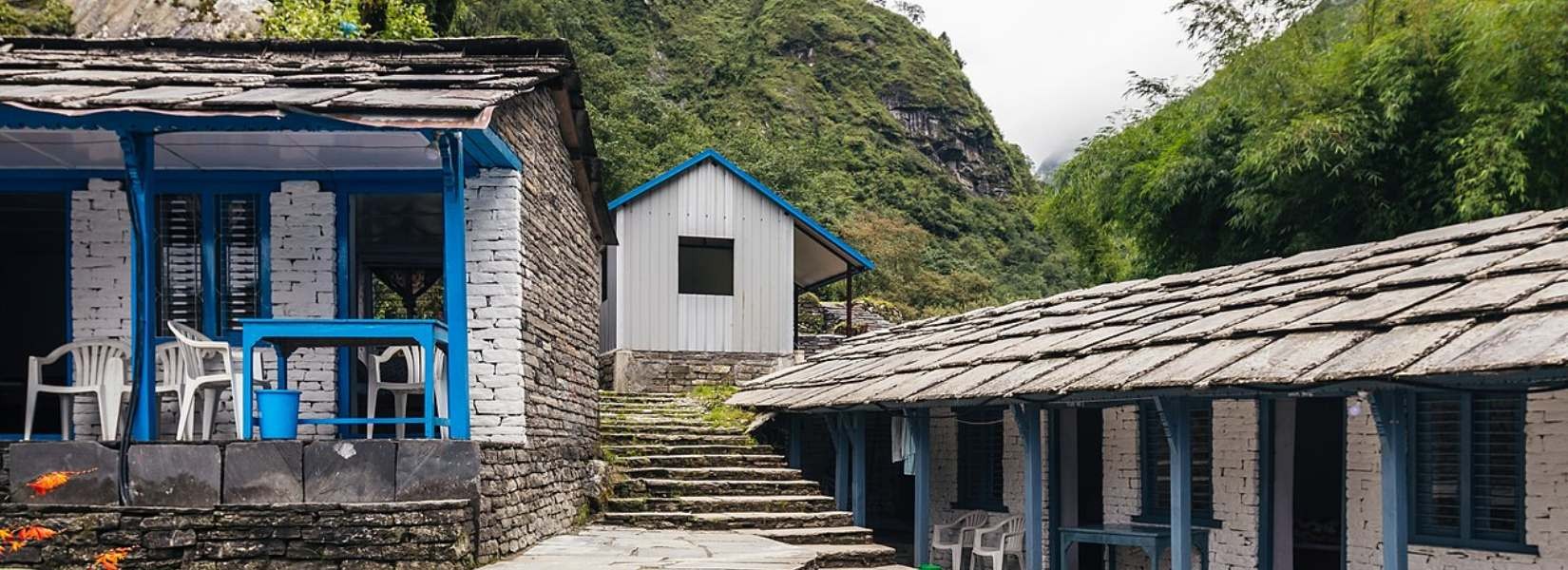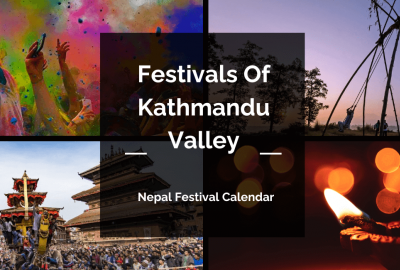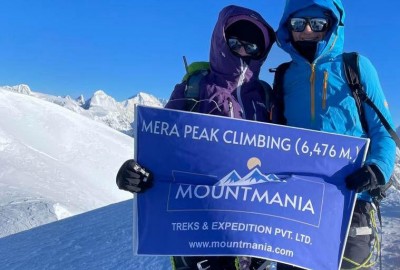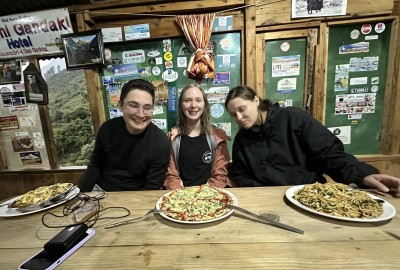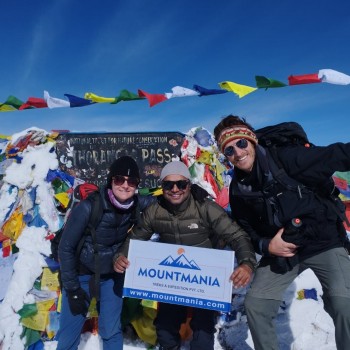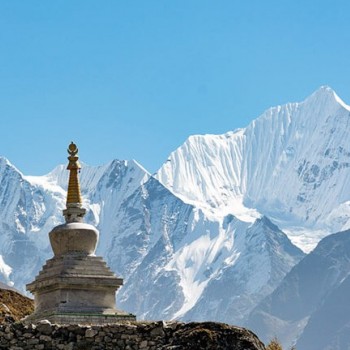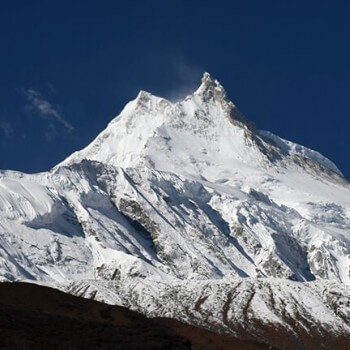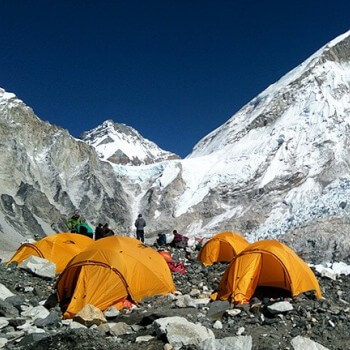If you're planning a trek in Nepal you'll inevitably hear about teahouses. But what exactly is a teahouse in Nepal, and why are they so integral to the Himalayan trekking experience? This comprehensive guide will answer all your questions about these mountain lodges that have transformed trekking in Nepal.
Table of Contents
Plan your trip to Nepal
Customize your trip with help from a local travel specialist.
Understanding Teahouses in Nepal
A teahouse in Nepal is a simple mountain lodge that provides basic accommodation and meals to trekkers along popular hiking routes. Despite their name, teahouses are much more than just places to drink tea—they're the backbone of Nepal's trekking infrastructure, offering weary hikers a warm bed, hot meals, and a glimpse into local mountain culture.
The term teahouse originates from the small tea shops that local Sherpa and mountain communities traditionally operated along trade routes. Over the decades, as trekking tourism grew in Nepal, these simple tea stops evolved into the lodges we know today.
The History of Teahouse Trekking
Teahouse trekking revolutionized how people experience the Himalayas. Before the 1970s, trekking in Nepal required fully organized camping expeditions with porters carrying tents, food, and cooking equipment. This made trekking expensive and accessible only to well-funded expeditions.
The concept of teahouse trekking emerged in the Everest region during the 1970s when local Sherpa families began offering basic lodging to the increasing number of trekkers. The success of this model quickly spread to other popular trekking regions like Annapurna, Langtang, and Manaslu.
Today, teahouse trekking has made the Himalayas accessible to thousands of independent travelers and budget-conscious adventurers annually.
What Does a Typical Teahouse Look Like?
Teahouses vary significantly depending on their location, altitude, and the route's popularity. However, most share common characteristics:
Architecture and Structure
Most teahouses are built using local materials—stone walls, wooden beams, and corrugated tin or slate roofs. In lower elevations, you'll find more elaborate structures with colorful painted exteriors and flower gardens. At higher altitudes, teahouses become simpler and more utilitarian, prioritizing functionality over aesthetics.
The typical teahouse is a two or three-story building. The ground floor usually houses the kitchen and dining area, while upper floors contain guest rooms. The dining room is the heart of every teahouse, featuring a central heating stove (in colder regions) where trekkers gather to warm up, share stories, and enjoy meals.
Room Facilities
Teahouse rooms are basic but functional. A standard room includes:
- Two single beds with foam mattresses
- Pillows and blankets (though sleeping bags are recommended)
- Small side table or shelf
- Sometimes a wooden bench
- Occasionally, a window with mountain views
Don't expect luxury—rooms are small, walls are thin, and heating is rarely provided in individual rooms. The minimalist setup keeps costs low and reduces environmental impact in these remote locations.
Bathroom Facilities
Bathroom facilities vary by altitude and teahouse quality:
- Lower elevations: Private attached bathrooms with running water (cold or solar-heated), western-style toilets, and sometimes even hot showers.
- Mid elevations: Shared bathroom facilities with squat or western toilets, cold water taps, and hot showers available for an additional charge.
- Higher elevations: Basic shared bathrooms, often with squat toilets and limited water. Hot showers become rare or very expensive due to the difficulty of heating water at altitude.
Teahouse Amenities and Services
Dining Experience
The dining hall is where the magic happens. This communal space features long tables where trekkers from around the world share meals and experiences. Many teahouses have a central heating stove or fireplace, making the dining area the warmest place in the establishment.
Food Menu Options
Teahouse menus are surprisingly diverse, offering:
- Nepali dishes: Dal bhat (rice with lentil soup), momos (dumplings), thukpa (noodle soup)
- Western options: Pasta, pizza, pancakes, French toast, sandwiches
- Tibetan specialties: Tibetan bread, tsampa porridge, butter tea
- Drinks: Tea, coffee, hot chocolate, soft drinks, beer (at lower elevations)
Dal bhat is the most recommended option—it's nutritious, energy-packed, and usually comes with unlimited refills, making it excellent value for money.
Additional Services
Many teahouses offer:
- Charging stations for electronic devices (usually for a fee)
- WiFi (increasingly common but expensive and often slow)
- Hot showers ( NPR 200-500 depending on altitude)
- Laundry services
- Boiled or filtered drinking water
- Basic medical supplies
- Souvenir shops
Popular Teahouse Trekking Routes in Nepal
Everest Base Camp Trek
The Everest region has the most developed teahouse network in Nepal. From Lukla to Everest Base Camp and Gokyo Lakes, you'll find well-established teahouses with relatively good facilities. Some teahouses in Namche Bazaar even offer heated rooms, bakeries, and espresso machines.
Annapurna Circuit Trek
The Annapurna region rivals Everest in terms of teahouse infrastructure. The circuit offers diverse options from basic lodges to more comfortable establishments. The lower elevations around Pokhara have particularly nice teahouses with gardens and mountain views.
Langtang Valley Trek
Langtang's teahouse network was rebuilt after the devastating 2015 earthquake. The lodges here offer authentic cultural experiences as many are family-run operations where you'll interact closely with local Tamang communities.
Manaslu Circuit Trek
A more remote option with simpler teahouses. The lodges here are more basic, but this adds to the adventure and authentic experience of this less-traveled circuit.
Cost of Staying in Teahouses
Teahouse accommodation is remarkably affordable, but there's a catch—lodges make their profit from food and drink sales.
Accommodation Costs
- Lower elevations: NPR 200-500 per night ($1.50-4 USD)
- Mid elevations: NPR 500-800 per night ($4-6 USD)
- Higher elevations: NPR 800-1,500 per night ($6-12 USD)
Some teahouses offer free accommodation if you eat all your meals there, especially during low season.
Meal Costs
- Breakfast: NPR 300-600 ($2-5 USD)
- Lunch/Dinner: NPR 500-1,200 ($4-10 USD)
- Hot drinks: NPR 100-400 ($0.75-3 USD)
- -Beer: NPR 400-800 ($3-6 USD)
Prices increase with altitude as supplies must be carried by porters or flown in by helicopter.
Teahouse vs. Camping Treks: What's the Difference?
Teahouse Trekking Advantages:
- More affordable
- Less environmental impact (no waste from camping)
- Cultural immersion with local families
- Flexibility to change plans
- Lighter pack weight
- Social atmosphere with other trekkers
Camping Trek Advantages:
- Access to remote areas without teahouses
- More privacy
- Fixed menu quality
- Better for large groups
- Necessary for off-the-beaten-path routes
Most trekkers prefer teahouses for popular routes, while camping is reserved for remote expeditions and restricted areas.
Cultural Etiquette in Teahouses
Respecting local customs enhances your experience:
- Remove shoes before entering the dining or sleeping areas
- Order food from your host teahouse rather than bringing outside food
- Be patient with service—everything takes longer at altitude
- Respect quiet hours (usually after 9 PM) as walls are thin
- Learn basic Nepali phrases like "Namaste" and "Dhanyabad" (thank you)
- Don't waste resources—water and heat are precious in the mountains
- Tip appropriately if service was good
What to Expect at Different Altitudes
Below 3,000 meters
Comfortable teahouses with good facilities, hot showers, diverse menus, and sometimes attached bathrooms. These feel more like guesthouses than basic lodges.
3,000-4,000 meters
Simpler facilities, shared bathrooms, limited hot water, and higher prices. The dining room becomes crucial as individual rooms are unheated.
Above 4,000 meters
Very basic accommodations, minimal facilities, expensive everything, and limited menu options. Comfort takes a backseat to functionality, but the mountain views compensate for any hardships.
Health and Safety Considerations
Altitude Sickness
Teahouse locations allow for proper acclimatization schedules. Most established routes have teahouses spaced appropriately for gradual altitude gain. Listen to your body and don't rush—"slowly slowly" is the Himalayan mantra.
Food Safety
Stick to well-cooked foods and boiled water. Avoid:
- Raw vegetables at high altitudes
- Dairy products above 3,000 meters
- Unpurified water
- Undercooked meat
Hygiene
Carry hand sanitizer as washing facilities may be limited. Bring your own toilet paper and a headlamp for nighttime bathroom trips.
Essential Items for Teahouse Trekking
While teahouses provide basics, bring:
- Sleeping bag (rated for expected temperatures)
- Sleeping bag liner (for extra warmth and hygiene)
- Headlamp with extra batteries
- Water purification tablets or filter
- Earplugs (walls are thin)
- Power bank (charging is expensive)
- Toilet paper and wet wipes
- Personal toiletries
- Quick-dry towel
- Padlock for room doors
Booking and Reservations
Generally, you don't need advance reservations for teahouses except:
- Peak seasons (March-May and September-November)
- Very popular locations (Namche Bazaar, Dingboche)
- Large groups
Most trekkers simply arrive and find a room, giving flexibility to adjust pace and plans. During peak season, arriving early afternoon ensures better room selection.
Environmental Impact and Sustainability
Modern teahouses face environmental challenges:
Positive Impacts:
- Reduce camping waste
- Support local economies
- Provide employment
- Cultural preservation incentive
Negative Impacts:
- Increased waste generation
- Firewood consumption
- Water usage
- Infrastructure development in pristine areas
Responsible trekkers can help by:
- Carrying reusable water bottles
- Avoiding plastic bottles
- Taking trash down the mountain
- Using solar charging when available
- Supporting eco-friendly teahouses
The Future of Teahouses in Nepal
Teahouses continue evolving with:
- Solar panel installations for electricity
- Improved waste management systems
- Better construction standards post-earthquake
- WiFi expansion
- More diverse menu options
- Improved sanitation facilities
The challenge lies in balancing comfort with environmental sustainability and maintaining the authentic cultural experience that makes teahouse trekking special.
Final Thoughts
Teahouses are more than just accommodation—they're windows into Himalayan life, social hubs for global travelers, and testament to the entrepreneurial spirit of Nepal's mountain communities. While they may not offer luxury, they provide something far more valuable: an authentic, affordable, and culturally rich way to experience the world's highest mountains.
Whether you're sipping butter tea in a Sherpa lodge near Everest or warming yourself by the stove in an Annapurna teahouse, you're participating in a uniquely Nepalese experience that has made the Himalayas accessible to adventurers worldwide.
So embrace the simple pleasures—the thin walls, the cold morning air, the communal dining tables, and the remarkable hospitality of your mountain hosts. That's the true spirit of teahouse trekking in Nepal.
Ready to experience teahouse trekking for yourself? Start planning your Himalayan adventure and discover why this simple accommodation style has become synonymous with trekking in Nepal.

